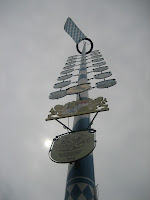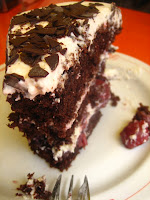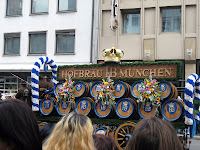We had an amazing opportunity to visit a sugarbush farm in Ontario, Canada and saw the whole process of making maple syrup.
Buckets are hanging on the trees and collecting the sap that is literally dripping from small spouts that have been bored in the trees. Big maple bush farms have hoses that are connecting all the trees.
On a good day one tree can give about 12 litres of maple sap. The season runs usually between mid March until end of April, depending on the outside temperature.
The temperature must be minus during the night and plus during the day for the sap to flow. At some point starch in the trunk converts into sugar and when the temperature is plus degrees during the day the sugary sap goes all the way up in the trunk, and when the temperature drops during the night the sap goes all the way down and is caught by the spouts.
The sugar level is measured with an aerometer and the sap contains about 2 % sugar, no more. Basically most of it is water and that is why it does not have the nice colour the maple syrup has. We tasted it and it has absolutely no taste.
After many many hours of boiling in special machines the most of the water evaporates and the end product is left with 67 % of sugar and it looks and tastes like the maple syrup we know.


Before visiting the maple bush I always thought that the maple syrup comes out of the tree looking as in the supermarket :-). But there is so much patience and labour behind the whole process. Thank you Canadian First Nation people for figuring out
how to do this.






















 I did find couple of straws on the side of the road and this is how the seeds look like when ready for harvest:
I did find couple of straws on the side of the road and this is how the seeds look like when ready for harvest:




 I live very close to one of these fields so I will try to follow up its growing process.
I live very close to one of these fields so I will try to follow up its growing process.


 The discs are dissolved in milk or water and the froth is made with a molinillo, a traditional Mexican froth maker.
The discs are dissolved in milk or water and the froth is made with a molinillo, a traditional Mexican froth maker. But in small towns in the areas where cacao beans are grown you can even buy small packages with cacao beans, sugar and cinnamon for mixing as you like and making your own chocolate at home. Yes, nothing can beat that!
But in small towns in the areas where cacao beans are grown you can even buy small packages with cacao beans, sugar and cinnamon for mixing as you like and making your own chocolate at home. Yes, nothing can beat that!

















